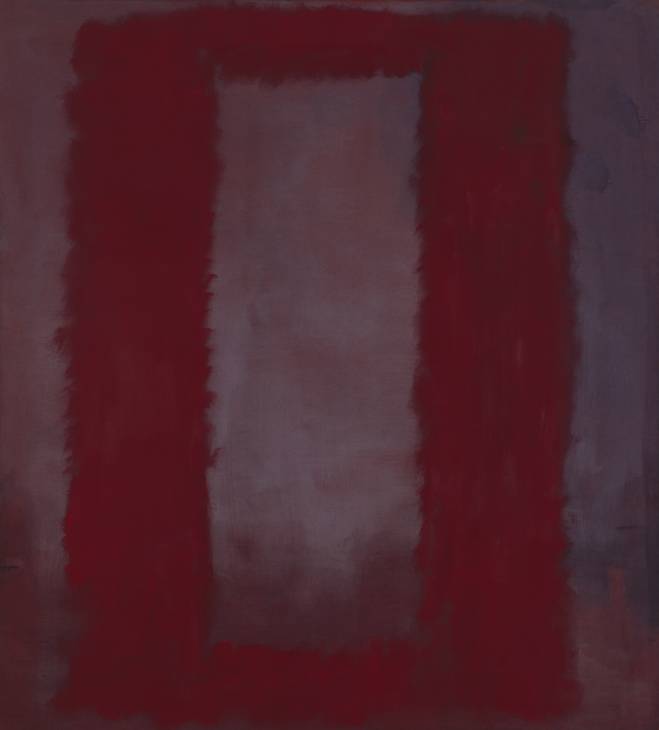
RED ON MAROON
16/05/2009 15:50LISTEN: Red on Maroon

Red on Maroon – Mark Rohtko 1959
My Night with the Prostitute From Marseille by Beirut from March of the Zapotec / Realpeople Holland (2009)
Close Your Eyes (feat. Zach Condon) [Remix] by Alaska In Winter from Holiday (2009)
Tricky Tricky by Röyksopp from Junior (2009)
Me I Say Yes by Jimi Tenor & Kabu Kabu from 4th Dimension (2009)
Grains by Boozoo Bajou from Grains (2009)
If I Had a Heart by Fever Ray from Fever Ray (2009)
Timebomb by The Whitest Boy Alive from Rules (2009)
Pulmões by Sao Paulo Underground from The Principle of Intrusive Relationships (2009)
Spacious Thoughts (feat. Tom Waits & Kool Keith) by N.A.S.A. from The Spirit Of Apollo (2009)
Eat Your Heart by Micachu from Jewellery (2009)
Slap Dash for No Cash by Art Brut from Art Brut Vs Satan (2009)
Gun In The Sun by Wavves from Wavvves (2009)
Indiana by Cymbals Eat Guitars from Why There Are Mountains (2009)
Glass Blocks by These Are Powers from All Aboard Future (2009)
This Love Is Fucking Right by The Pains of Being Pure at Heart from The Pains of Being Pure at Heart (2009)
Noam Chomsky: The War on Drugs
“At the time the drug war was launched, deaths from tobacco were estimated at about 300,000 a year, with perhaps another 100,000 from alcohol. But these aren't the drugs the Bush administration targeted. It went after illegal drugs, which had caused many fewer deaths - over 3,500 a year - according to official figures. One reason for going after these drugs was that their use had been declining for some years, so the Bush administration could safely predict that its drug war would "succeed" in lowering drug use.
The Administration also targeted marijuana, which hadn't caused any known deaths among some 60 million users. In fact, that crackdown has exacerbated the drug problem - many marijuana users have turned from this relatively harmless drug to more dangerous drugs like cocaine, which are easier to conceal [or heroin in prison, which is more difficult to detect in test].
Just as the drug war was launched with great fanfare in September 1989, the US Trade Representative (USTR) panel held a hearing in Washington to consider a tobacco industry request that the US impose sanctions on Thailand in retaliation for its efforts to restrict US tobacco imports and advertising. Such US government actions had already rammed this lethal addictive narcotic down the throats of consumers in Japan, South Korea and Taiwan, with human costs of the kind already indicated.
The US Surgeon General, Everett Koop, testified at the USTR panel that "when we are pleading with foreign governments to stop the flow of cocaine, it is the height of hypocrisy for the United States to export tobacco." He added, "years from now, our nation will look back on this application of free trade policy and find it scandalous."
Thai witnesses also protested, predicting that the consequence of US sanctions would be to reverse a decline in smoking achieved by their government's campaign against tobacco use. Responding to the US tobacco companies' claim that their product is the best in the world, a Thai witness said: "Certainly in the Golden Triangle we have some of the best products, but we never ask the principle of free trade to govern such products. In fact we suppressed [them]." Critics recalled the Opium War 150 years earlier, when the British government compelled China to open its doors to opium from British India, sanctimoniously pleading the virtues of free trade as they forcefully imposed large-scale drug addiction on China.
In France, the threat of the political power and influence of the labour movement was enhanced by its steps to impede the flow of arms to French forces seeking to re-conquer their former colony of Vietnam with US aid. So the CIA undertook to weaken and split the French labour movement - with the aid of top American labour leaders, who were quite proud of their role.
The task required strike-breakers and goons. There was an obvious supplier: the Mafia. Of course, they didn't take on this work just for the fun of it. They wanted a return for their efforts. And it was given to them: they were authorised to re-establish the heroin racket that had been suppressed by the fascist governments - the famous "French connection" that dominated the drug trade until the 1960s.
By then, the centre of the drug trade had shifted to Indochina, particularly Laos and Thailand. The shift was again a by-product of a CIA operation - the "secret war" fought in those countries during the Vietnam War by a CIA mercenary army. They also wanted a payoff for their contributions. Later, as the CIA shifted its activities to Pakistan and Afghanistan, the drug racket boomed there.
The clandestine war against Nicaragua also provided a shot in the arm to drug traffickers in the region, as illegal CIA arms flights to the US mercenary forces offered an easy way to ship drugs back to the US, sometimes through US Air Force bases, traffickers report.
The close correlation between the drug racket and international terrorism (sometimes called "counterinsurgency," "low intensity conflict" or some other euphemism) is not surprising. Clandestine operations need plenty of money, which should be undetectable. And they need criminal operatives as well. The rest follows.”
—————
